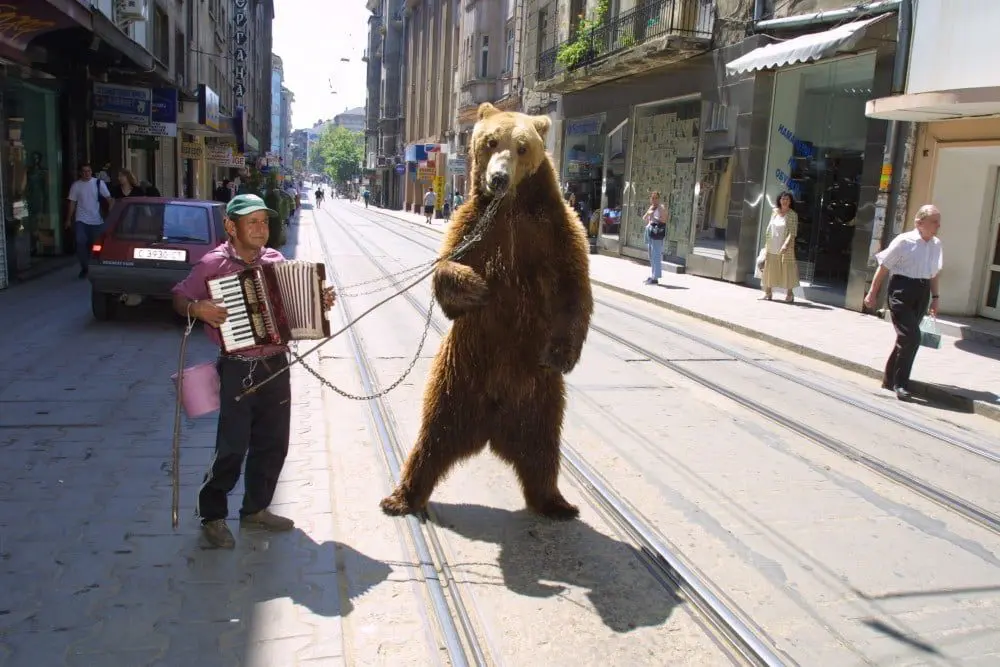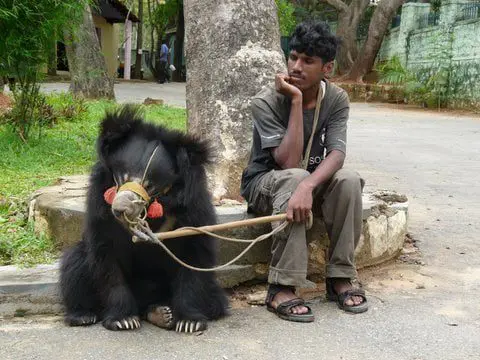Dancing bears are becoming a thing of the past, thanks to the tireless efforts of a number of animal welfare organisations.
Two of the last known dancing bears in Nepal were rescued last month by World Animal Protection with the Jane Goodall Institute of Nepal and the Nepali police last month.
The distressed and traumatised sloth bears, names Rangila and Sridevi, will now live in Parsa National Park, no longer forced to perform for crowds or pose for selfies.
WAP wildlife expert Neil D’Souza highlighted the extended suffering of the bears since they were poached from the wild.
“It’s extremely distressing to see animals being stolen from the wild, and the sad reality is there are more wild animals suffering across the world, purely for the entertainment of tourists,” he said.
“I am pleased that for these two sloth bears at least, a happy ending is finally in sight.”
The bears are captured as cubs, separated from their mothers and kept in appalling conditions. In order to make them “dance”, harsh training methods are used to make them submissive. Their noses are pierced with a hot metal rod, and a rope inserted through which is then used to control them.
“We are thrilled that the last two known Nepali dancing bears have been rescued from their lifetime of suffering,” Manoj Gautam of the Jane Goodall Institute of Nepal said.
“After a year of tracking them, using our own intelligence and in cooperation with local police, our hard effort and dedication has helped to bring an end to this illegal tradition in Nepal.”
The milestone follows 20 years of phasing out the centuries-old practice in countries around the world like Greece, Bulgaria and Turkey.
India’s last dancing bear, Raju, was rescued in 2009, but ensuring it is truly abolished remains a priority for Wildlife SOS India.
“We’re trying to go one full generation in India without a dancing bear – a generation of children who have never seen the practice and would never think of it as a viable livelihood,” the organisation said.
In order to stamp out the practice, the bear handlers must be rehabilitated – helped to learn new trades so they can continue to support their families.
Work is also underway to end the exploitation of bears in Pakistan.
Check out this video about the recent rescue:










